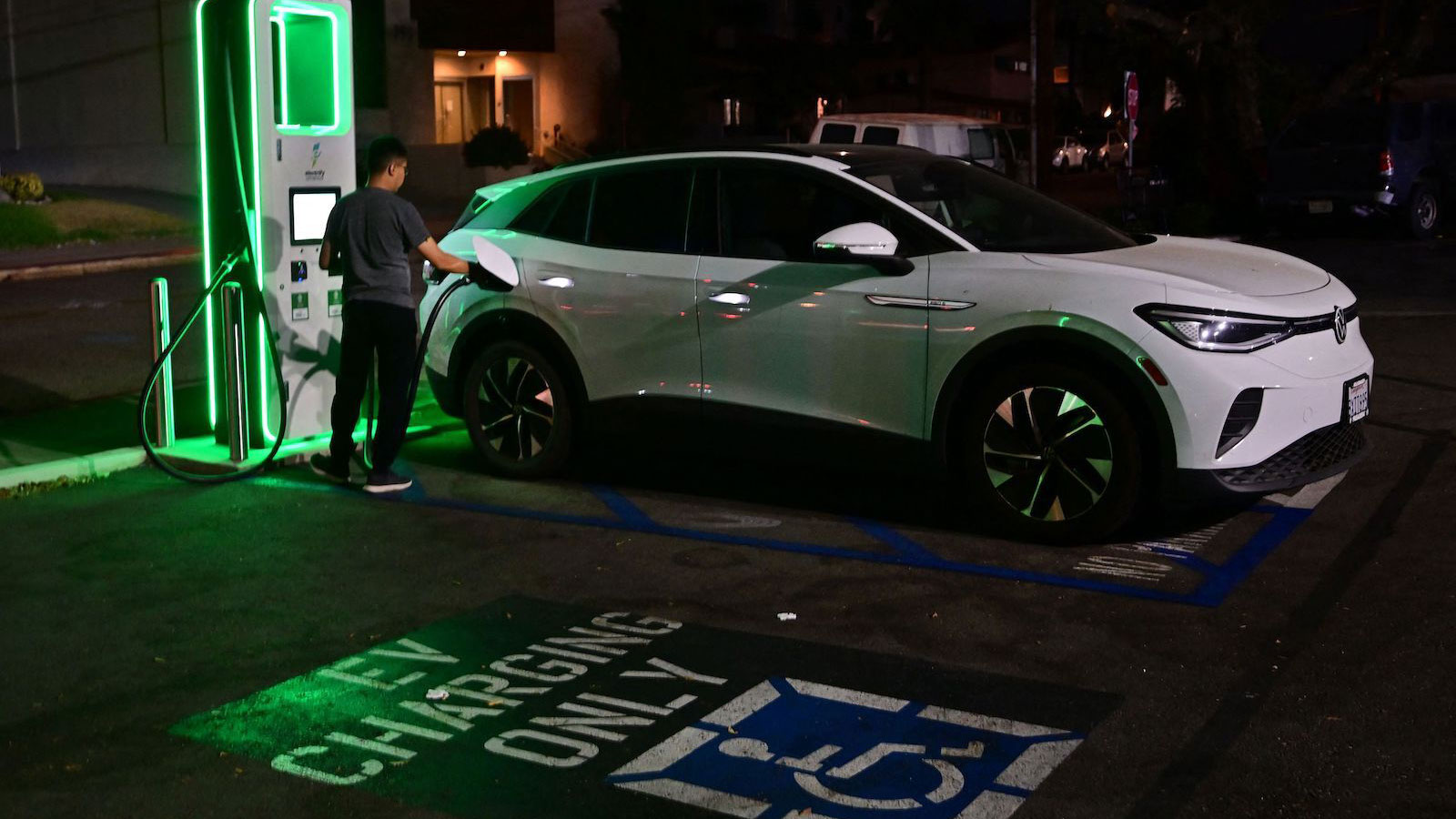The Department of Transportation has announced standards aimed at addressing one of the greatest challenges in the transition to electric vehicles: the reliability and convenience of public charging stations.
The requirements, included in a robust set of EV charging initiatives the Biden administration released Wednesday, are the first comprehensive guidelines to address charger installation, operation and maintenance. They will apply to all federally funded projects.
“This is a major step toward a world where every EV user will be able to find safe, reliable charging stations anywhere in the country,” U.S. Transportation Secretary Pete Buttigieg said in a statement. “Recharging an EV away from home will be as predictable and accessible as filling up a gas tank.”
The United States has about 160,000 charging stations. The Biden administration wants to build a national network of 500,000 by 2030, part of its goal of seeing electric vehicles comprise half of all new car sales within the same time frame. Even that ambitious buildout may not be enough. S&P Global Mobility estimates the country will need more than two million public chargers within seven years to support the 28 million EVs it expects to see on the road by then.
Building that infrastructure will require the participation of an array of vendors, manufacturers, and sites, each with its own approach to providing service. EV drivers often encounter public charging stations with varying payment requirements and interfaces. They vary in charging speed and often do not work at all.
The new standards aim to eliminate these frustrations, which threaten the widespread adoption of EVs and present equity barriers for drivers who cannot install home chargers. They address payment methods, plug types, price transparency, station reliability, charging speeds, and more as the Biden administration directs $7.5 billion toward the expansion of EV infrastructure.
“The fact that this is being thought out now will hopefully prevent gaps in terms of access and equity before the ecosystem has been completed,” said Annalise Czerny, who helps design programs at Cal-ITP, a California initiative that addresses accessibility across transit.
Standardizing payment methods across networks is particularly important for promoting equity, Czerny said. Vendors sometimes require downloading a proprietary app or depositing a minimum amount of money into an account to use a station. The new rules prohibit requiring memberships and make contactless payment options standard.
“If someone has put ten bucks into an app and doesn’t actually need it that week, it’s crazy that they can’t easily convert those dollars back to buy milk or baby formula,” said Czerny. “For folks who are living on the edge, being able to access money that is yours already is hugely important.”
The standards also set minimum requirements for charger reliability, a common sore spot for drivers. A 2022 study of 181 public stations in the Bay Area found that nearly a quarter of the connectors did not work.
“The mass market wants it to be a gas station experience where they pull up and plug in with a very simple user interface,” said Carleen Cullen, a co-author on the study and the co-founder and executive director of Cool The Earth. “We are far from that.”
The guidelines announced Wednesday require EV charge stations built with federal funding to have an average annual uptime greater than 97 percent, a standard that Cullen said will hold the industry accountable for monitoring and maintaining their hardware and will improve EV equity. “People in multifamily housing and our low-income communities don’t have charging access at home,” she said. “They’ll be relying on these fast charging stations.”




